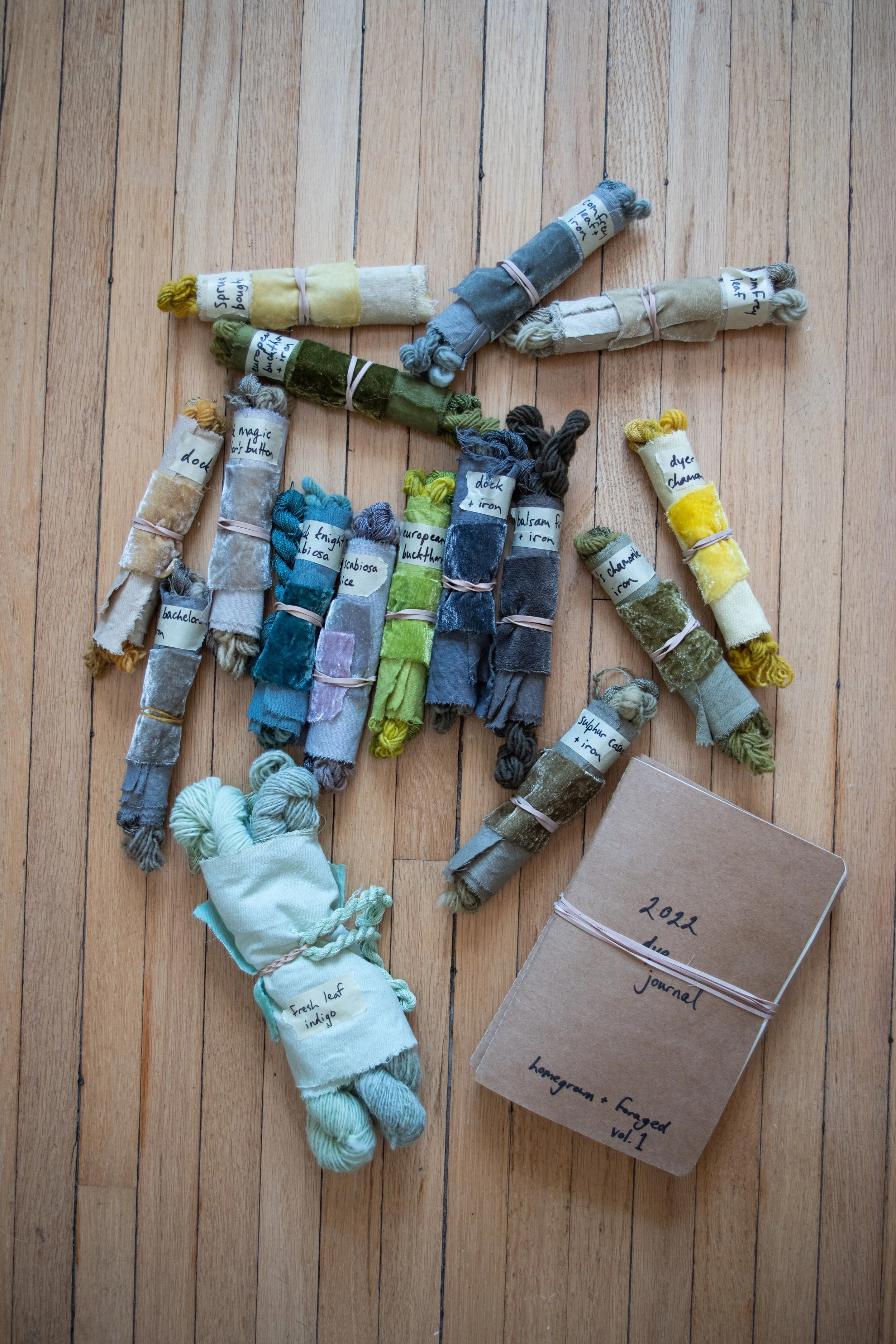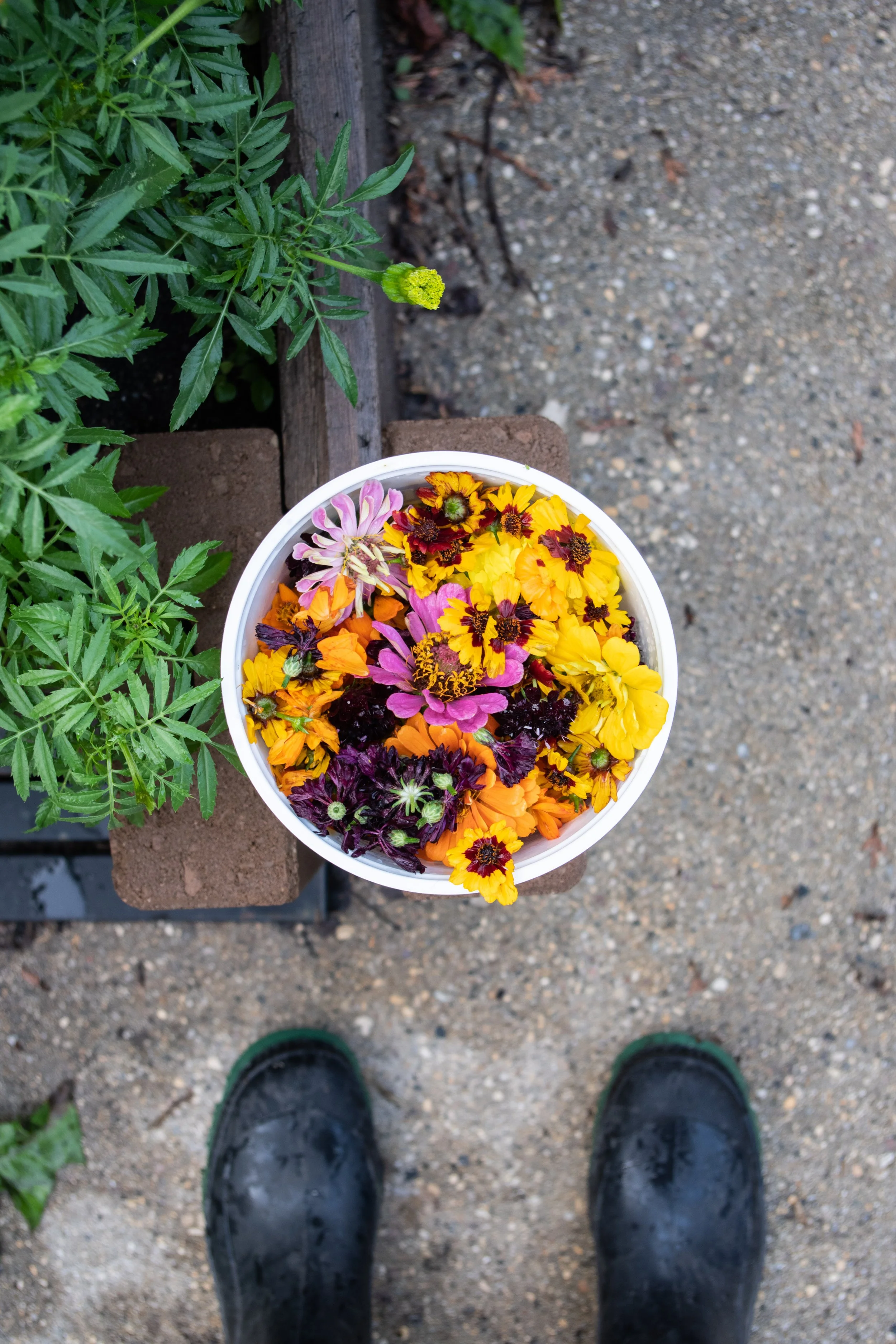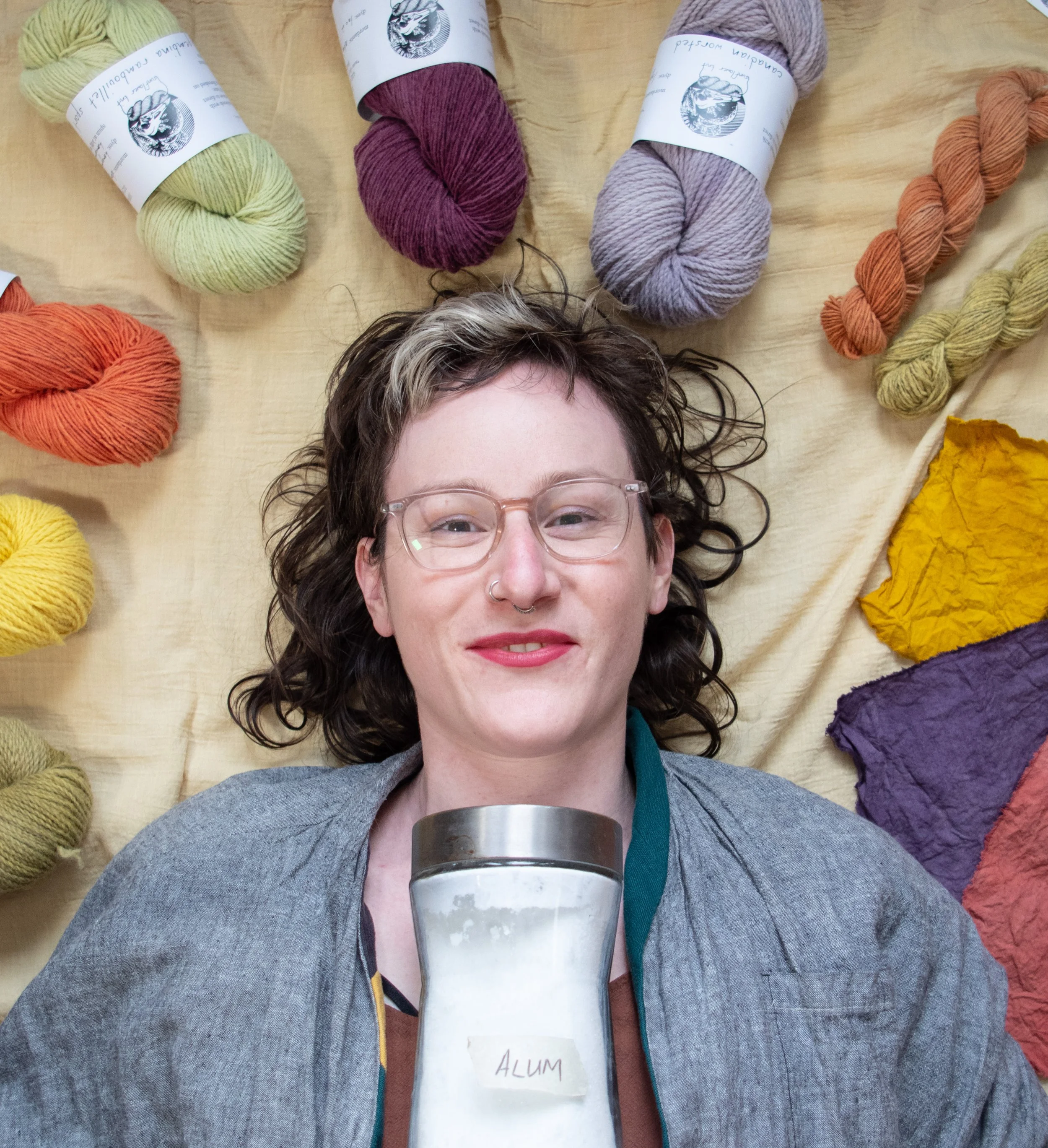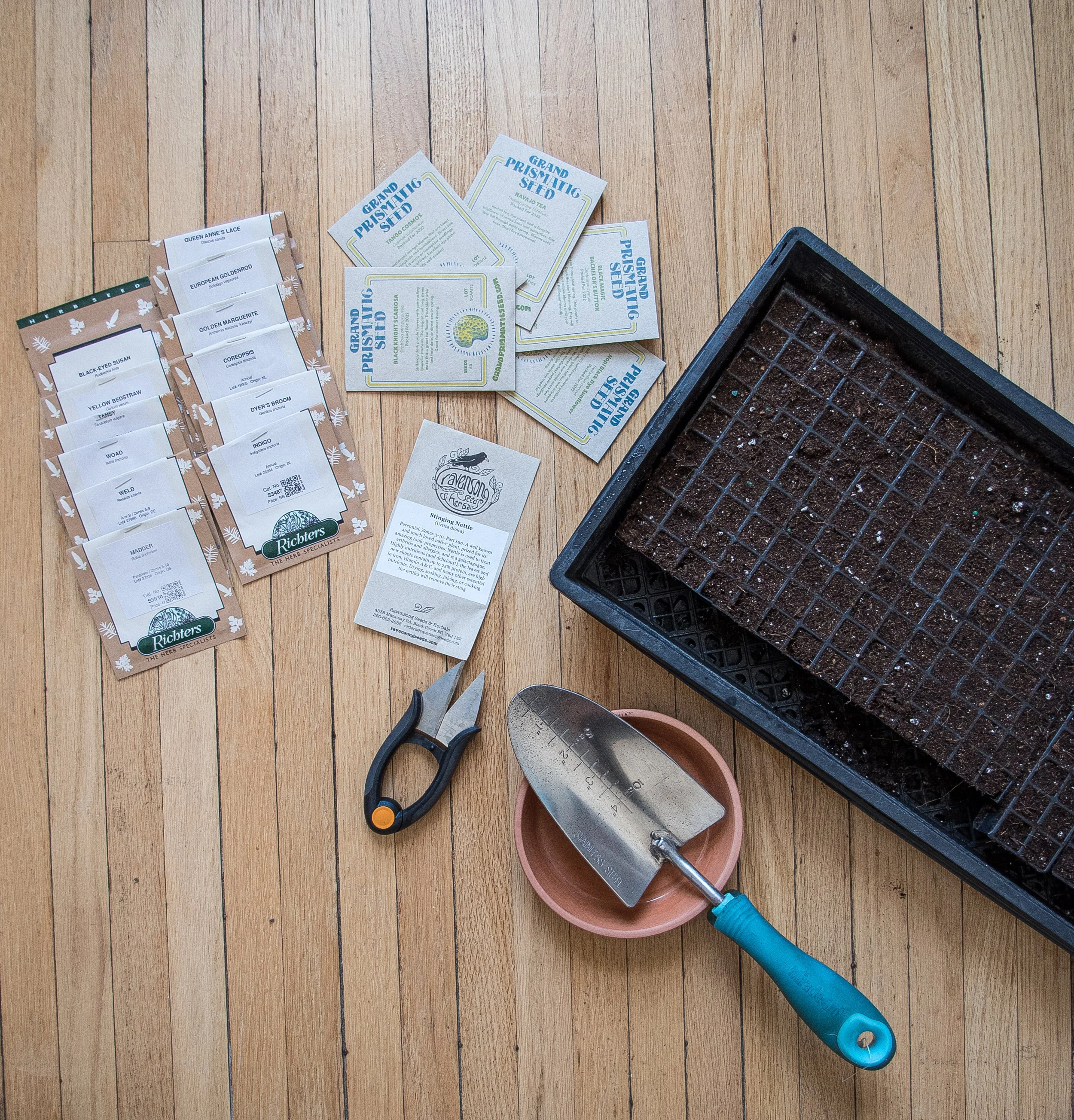
natural dyeing 101
the self-paced video course for beginner to intermediate dyers looking to learn natural dyeing from start to finish! go from overwhelmed and intimidated to confident, happy, and excited natural dyer in as little as one weekend! 🌿🌼🌻
in this jam-packed series of pre-recorded video classes, you'll learn:
the difference between plant and animal fibres and how to prepare each of them so that you get even, colourfast results every time
how to set up your dye studio even if you live in a tiny high-rise apartment
what mordants are, why they’re important, and the safe ones to use so that you can enjoy beautiful colours that don’t fade so quickly!
how to start identifying natural dyes in your own backyard so that you can enjoy a local rainbow no matter where in the world you live 🌱
basic safety considerations so that you can play with your dye pots without worrying whether you should be using up your whole stash of N95 masks
-
-
just because it’s natural doesn’t mean it can’t hurt you.
-
studio set-up
how to set up a dye studio that works for you, whether you live in a 12th floor apartment or on an acreage.
how to set up a dye studio that works for you, whether you live in a 12th floor apartment or on an acreage.
-
time to play!
-
prepping fibres
how to prep both animal and plant fibres for natural dyeing, including tips for working with yarn vs. yardage.
how to prep both animal and plant fibres for natural dyeing, including tips for working with yarn vs. yardage.
-
ethical sourced extracts are a great way to work with natural dyes.
-
my personal most favourite part of the practice 🌿
-
-
-
-
exhausting your pots, composting your used plants, rinsing, and more!
-
planting a natural dye garden
no matter where you live and how much of a green thumb you have, you can grow natural dyes right at home!
no matter where you live and how much of a green thumb you have, you can grow natural dyes right at home!
-
natural dyeing is for all ages!
-
some final thoughts before you dive into your newest favourite hobby!
-
-
-
LIVE CLASS - colourfastness & mordants (march 20, 2022)
a recording of a live zoom class where i answer your burning questions about colourfastness, mordants vs. binders, and other chemistry and magic!
a recording of a live zoom class where i answer your burning questions about colourfastness, mordants vs. binders, and other chemistry and magic!
-
ethical foraging on treaty lands
a recording of my presentation for the Natural Dyes in Northeast America: Challenges, Opportunities and Future Directions Conference hosted by Toronto Metropolitan University, Toronto
a recording of my presentation for the Natural Dyes in Northeast America: Challenges, Opportunities and Future Directions Conference hosted by Toronto Metropolitan University, Toronto
-
a bonus interview with megan samms of live textiles!
-
a bonus interview with andrea of renard et fleur!
-
a bonus interview with kerri of westlake knits!
-
a bonus interview with hennah (henny) verhoeven!
-
sign up and get started
meet your team
✳
meet your team ✳
willow
assistant gardener
ash
natural dyer, #plantwitch
i’m the hedgewitch and queer femme behind sunflower knit and from field to skin. a professional natural dyer since 2014, i have both a thriving business built around naturally dyed wool yarns and a deep personal practice focused on exploring the local colour palette in my home region, pembina fibreshed and treaty one territory.
i’ve been teaching natural dyeing for several years to both kiddos and kiddos-at-heart and am known for my unique approach to classes, with an equally heavy emphasis on the history, ethics, and sustainability around natural dyeing (hello, bookworm and academic nerd!) as well as how to work with both imported dyes (sappanwood is my forever love) and locally sourced fresh dye plants (my personal favourite even when i have to chase my dog away from my garden beds…no, willow, they are not “salad”…). i have a deep obsession with all-natural sock yarns dyed with local plants and think cochineal are the coolest bugs around. and if you’re ever in doubt, i promise black knight scabiosa is pure magic.
what you’ll learn
-
set up your studio, learn safety 101, understand the chemistry, and get dyeing plant and animal fibres with foraged/fresh plants AND imported extracts 🌈
-
learn how to make a work vat with me!
-
post-dye care, planting a garden no matter where you live, introducing natural dyes to kiddos, and more.
you’ll also get
🎤 interviews with professional natural dyers across canada so that you can learn more about all the directions this hobby can take you
🖥 downloadable copies of natural dyeing as practice and natural dye care guide
📝 worksheets to help you retain important information
📚 a resource library containing reliable sources you can trust to help you continue your natural dyeing adventures
📦 sources for natural dye supplies in canada and the united states (with international shipping options) so that you can find everything you need in one place!
course FAQ
-
short answer: yes! they’re also different than synthetic dyes, require different care to maintain them over the longer term, and honestly if you just go grab any old (literally old) book of natural dye recipes off the library shelves, chances are pretty good that they are actually toxic. the way we dye now is different from how we dyed historically, from the mordants we use (no chrome here please!) to the dyes we harvest/purchase (if your brazilwood isn’t sappanwood, we’ve got a problem). also, devil’s advocate here, why exactly do you want your colour to stay the exact same for 20+ years? kathy hattori has made the analogy of natural dyes being the homemade muffin to synthetic dyes’ twinkie, and i’m inclined to agree with her. but don’t worry, we’ll chat all about that and about slow fashion sustainability in class…
-
i'm primarily self-taught, with opportunities to learn from others taken when i can. my practice has grown through extensive research from reliable books written by experts in the field, my own experiments, many many many hours of practice (we’re talking phd levels of time invested here), and several workshops taken over the years. i spent my earliest years learning from my then-mentor kelly ruth, and more recently was able to take workshops with aboubakar fofana, maiwa school of textiles, and cara marie piazza thanks to the opening up of online classes during the covid-19 pandemic. my immediate geographical location has very limited options for extended studies outside of self-directed teaching, although we have a growing community of dedicated natural dyers who are wonderful co-creators in local colour studies. i believe firmly in continuing to learn and grow a practice no matter how long you've been at it, and intend to continue seeking out and learning from fellow natural dyers across the world over the course of my life. lately my studies have been on my ancestral dye traditions and exploring their modern sustainable variations on the land i live now.
-
hell no. as you continue your own natural dyeing experiences, you'll learn more about how the various conditions inherent to natural dyes - the fact that they are sourced from living things, with uncontrollable factors like different growing conditions from harvest to harvest - make getting absolutely exact results time after time isn't feasible. it's also not where my personal interest lies, so i do not prioritize it. that being said, once you understand all those factors and how they influence your colours, you'll be able to run your own experiments to try and get visibly similar results and to tweak your dye pots accordingly.
-
you will never learn everything about natural dyeing from a single source, including this course. that being said, if you've already wasted time, materials, money, and energy on diy "tutorials" you found on pinterest or half-gleaned from instagram captions, i can guarantee you'll learn a lot more from this course even if you never take advantage of the extra resources in your class materials.
-
that's totally fine. if you're looking for a more entry-level investment, check out my natural dyeing e-bundle.
-
cool beans, this is not the right class for you. all the material is hosted via pre-recorded video classes (transcripts to come) and the worksheets and resources are also all hosted online.
-
the history of natural dyes, and how we value colour now, is deeply intertwined with colonialism. as a descendent of white settlers living on turtle island, my personal practice and its focus on my local colour palette is by necessity also rooted in active decolonization work. you can learn more about that with this resource list.
-
probably not. there are scattered swear words throughout your video classes and if you truly care more about that than learning the alchemy of natural dyes, this isn't the right fit for you.







